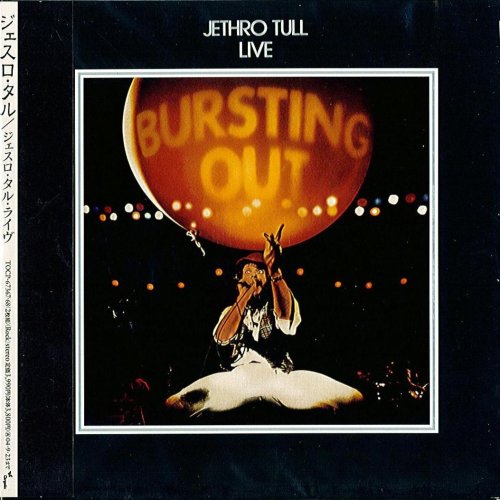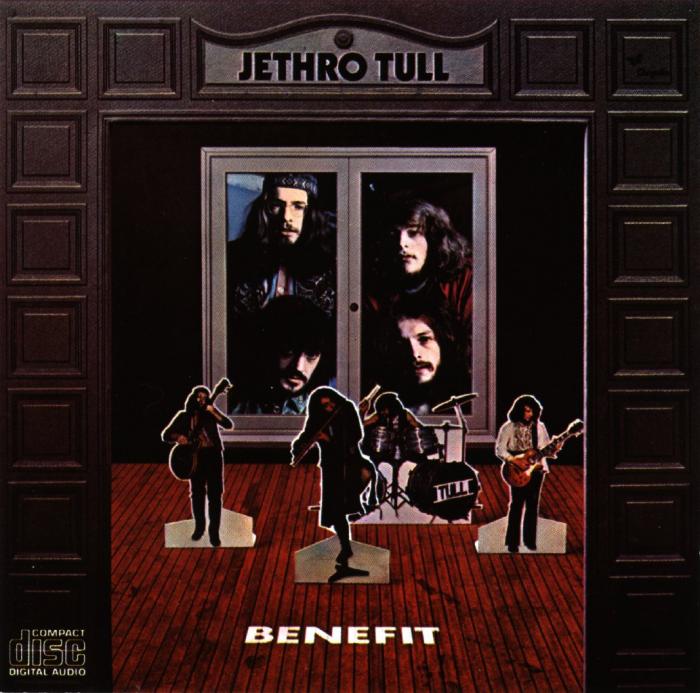Jethro Tull's 10 Greatest Guitar Moments

Today, Guitar World checks in with Jethro Tull and pinpoints what we feel are the legendary British band's 10 greatest guitar moments.
As always, our list digs deep into the band's six-string artistry (a staggering amount of which was provided by the great Martin Barre and, of course, Ian Anderson), while taking historical importance and other factors into account.
Barre, the axman behind "Cross-Eyed Mary," "Locomotive Breath" and so many more, holds a special place in Guitar World history; his solo on "Aqualung" comes it at Number 25 on our list of the 100 Greatest Guitar Solos of All Time."
"That guitar solo was totally improvised, and I did it in one take," he told Guitar World. "Luckily for me, that solo turned out well, because if it didn’t there would’ve been a flute solo in its place."
For more about Barre, including his recent projects, visit martinbarre.com. Also be sure to read our recent "Dear Guitar Hero" interview with Barre. For more about Jethro Tull and Anderson's recent solo work, visit jethrotull.com.
Check out our guide to Jethro Tull's 10 greatest guitar moments below. Be sure to leave a comment below to recommend other songs; we are not opposed to turning this into a Top 20!
"With You There To Help Me"
This opening track from Jethro Tull’s third album, Benefit (1970), announced that the rock world had a distinctive new guitar hero, and his name was Martin Barre. With Les Paul in hand, Barre sliced through Ian Anderson’s echoing flute like a battle axe through butter, adding bursts of dangerous excitement to this rather fabulous piece of melancholy.
All the latest guitar news, interviews, lessons, reviews, deals and more, direct to your inbox!
"To Cry You a Song"
Another great guitar-driven track from Benefit. The opening harmonized riff is as strong as anything off Black Sabbath’s Paranoid, which was recorded that same year, and the dueling guitar solos scattered throughout the song’s dynamic construction are all knockouts. This is the song Opeth wishes they wrote.
"Aqualung"
Who would’ve thought one of the greatest guitar solos in the classic rock era would be the centerpiece in song about a horny British hobo? Guitarist Barre remembers that while he was recording this great guitar track, Jimmy Page stopped by and waved to him through the studio glass. He almost stopped playing his Les Paul Jr. mid-solo to wave back. Damn good thing he didn’t.
"Life Is a Long Song"
It would definitely be wrong not to acknowledge a guitar contribution or two from front man/flautist Anderson. A masterful acoustic guitarist, his l playing can be heard throughout Jethro Tull’s entire catalog. “Life Is a Long Song” from Living In the Past is just one fine example of his gift, along with favorites like “Mother Goose” from Aqualung or the iconic opening to their classic Thick As a Brick album.
"Thick As a Brick"
Speaking of Thick As a Brick, in 1972 Tull had the unmitigated audacity to release an album comprised of a single 43:46-minute-long song. That was even ballsy by progressive rock standards, so thank god the song was good! The guitar fireworks are subtler than on previous albums, but there are still plenty of pleasures to be had. No, we won’t make you listen to the whole album…the first five minutes will do just fine. The real guitar excitement, however, kicks in at the three-minute mark.
"Pibroch (Cap in Hand)"
This tune from Songs From the Wood begins with one of the gnarliest, fuzziest, fattest guitar riffs ever committed to tape. Granted, the song takes a number of weird left turns down some disturbingly frilly medieval roads, but they all come back this gargantuan bastard of a guitar line.
"Steel Monkey"
Somewhere around 1980, Jethro Tull began to get a little too synthesizer-happy for their own good, and with every album it seemed harder for Barre to bust loose and burn down the house like he did in the early part of the band’s career. But every so often, bandleader Anderson would let the poor boy off his leash and let his guitar roar. This rocker from their 16th album, 1987’s Crest of a Knave, was one of those welcomed occasions.
"Cross-Eyed Mary"
This is as funky as Tull gets—a surprisingly lascivious song about a cross-eyed prostitute, featuring an equally dirty guitar riff. Guitarist Barre was often called upon to go toe-to-toe with a flute, and he definitely shows who's boss as he takes control of this edgy classic from the band’s biggest album, Aqualung. This is the song Electric Wizard wishes they wrote.
"Passion Play (“Magus Perde”)"
After having incredible success with the complex 1972 concept album Thick As a Brick, Jethro Tull did what any self-respecting prog band would do: follow it with an even more complicated concept album. Like Brick, the primary focus of 1973’s Passion Play was on the overall arrangement, but if you really listen to the guitar playing throughout, you’ll be amply rewarded. No fancy soloing on this section that comes, oh, about 40 minutes into the title song, but the rhythm work is wonderful and the riff is unlike any other.
"Conundrum"
This instrumental from the live 1978 Bursting Out demonstrates the deadly precision of Barre's picking and his wicked way with odd time signatures. One wishes he would’ve extended his solo at the two-minute mark, but if you’ve ever wanted to know what the fuss about Barre was all about—without a bunch of flutes buzzing around—this isn’t a bad place to start.







